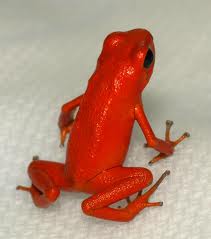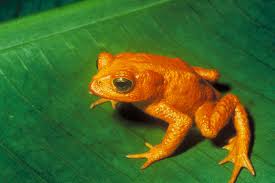
Amphibia- Oophaga pumilio
The organisms found in the Class Amphibia arose from Crossopterygian and Rhipidistian ancestors. The Class Amphibia have three extant orders, and two extinct subclasses. The name Class Amphibia implies continued ties to water. The group includes smallest terrestrial vertebrates up to some 5’ in length. The lungs and skin are used as adult respiratory organs in the Class. The gills present in the larvae are retained into adulthood in some neotinic forms. The organisms have hearts with two atria and one ventricle. Their skin is naked or has bony dermal elements. The organisms are ectothermic which means they must regulate body temperature by moving to different microclimates within their respective environments. The embryos lack an amnion, but the eggs are laid in a jelly-like protective coating.
Examples of organisms from the Class Amphibia include commonly named Amphibians.

Amphibia- Bufo periglenes
-
Ramel, G. (2010). The vertebrata. Retrieved from http://www.earthlife.net/inverts/vertebrata.html
-
Ehsan. (2010, August 6). Organisms and taxonomy. Retrieved from http://guides.wikinut.com/Kingdoms-in-The-Living-World/1s3ec4n6/
-
Kingdom-animalia. (2003, February 17). Retrieved from http://www.biology.buffalo.edu/courses/bio531/lecture6.html
-
Ramel, G. (2010). The vertebrata. Retrieved from http://www.earthlife.net/inverts/vertebrata.html
-
Diversity of vertebrates. (2010). Retrieved from http://www.shsu.edu/~bio_mlt/Chapter3.html
-
Animal. (2011). Wikipedia. Retrieved February 24, 2011, from http://en.wikipedia.org/wiki/Animal